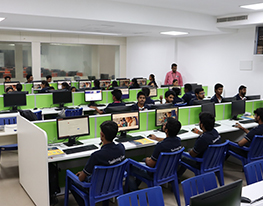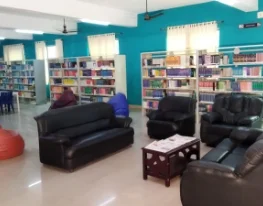Project Details |
|
1. PLANT DISEASE DETECTION USING DEEP LEARNING |
|
|
Agriculture field has a high impact on our life. Agriculture is the most important sector of our Economy. Proper management leads to a profit in agricultural products. Farmers do not expertise in leaf disease so they produce less production. Plant leaf diseases detection is the important because profit and loss are depending on production. CNN is the solution for leaf disease detection and classification. Main aim of this research is to detect the apple, grape, corn, potato and tomato plants leaf diseases. Plant leaf diseases are monitoring of large fields of crops disease detection, and thus automatically detected some feature of diseases as per that provide medical treatment. Proposed Deep CNN model has been compared with popular transfer learning approach such as VGG16. Plant leaf disease detection is the one of the required research topic as it may prove benefits in monitoring large fields of crops, and thus automatically detect the symptoms of diseases as soon as they appear on plant leaves. In this project we focus on providing a quick and effective solution to every farmer who is affected with crop damaging pests. The recent expansion of deep learning methods has found its application in plant’s disease prediction, offering a robust tool with high accurate results. Our aim isto build a plant disease predicting model using deep learning and deploy it in a website. This model can predict a plant’s disease by seeing its image. And we also provide treatment methods to cure that disease. |
|
2. PET ADOPTION SYSTEM |
|
|
The pet adoption system is a web-based platform that connects pet lovers with adoptable pets. The system simplifies the process of pet adoption by providing a user-friendly interface that enables pet owners to create listings for their pets and potential adopters to search for pets by breed, age, gender, and location. The systemaims to increase the number of pet adoptions by making it easier for pet lovers to find adoptable pets and providing a secure platform for pet owners to post adoption listings. The pet adoption system is designed to provide a comprehensive solution to the challenges associated with pet adoption. The system not only enables pet owners topost adoption listings but also provides users with valuable information on pet care, training, and nutrition. The system aims to educate users on the responsibilities ofpet ownership and promote responsible pet ownership. In this project report, we will provide a detailed overview of the pet adoption system, including its features, functionalities, design, and development process. Wewill also discuss the challenges and limitations of the system and provide recommendations for future development. |
|
3. ORCHARD MANAGEMENT IN OPEN FIELDS WITH DEEP LEARNING-BASED FRUIT MONITORING |
|
|
Mango is an important agricultural produce with high export value as it is being consumed internationally. This work presents a method for detection and counting of mangoes in RGB images for further yield estimation. The RGB images are acquired in open field conditions from a mango orchard in the pre-harvest stage. The proposed method uses, deep convolutional neural network based architecture for mango detection using semantic segmentation. Further, mango objects are detected in the semantic segmented output using contour based connected object detection. Results are analysed using the precision, recall, F1 parameters derived from contingency matrix. Results demonstrate the robustness of detection for a multitude of factors such as scale, occlusion, distance and illumination conditions, characteristic to open field conditions. Further mango fruit size also determined for the estimation of fruit maturation and size distribution, for further decision making to harvest and marketing. To detect fruit, cascade detection with histogram of oriented gradients (HOG) feature is applied. Finally, fruit lineal dimensions were calculated using the RGB-D depth information, fruit image size and the thin lens formula. We believe this work represents the first practical implementation of machine vision fruit sizing in field, with practicality gauged in terms of cost and simplicity of operation. |
|
4. Mango leaf disease prediction |
|
|
The Convolutional Neural Network CNN works by obtaining a picture and designating it with some weightage supported by the various objects of the image, to distinguish them from one another. CNN needs little or no pre-processing information as compared to different deep learning algorithms. Early diagnosis and correct identification of mango plant disease prediction will manage the unfolding of the diseases Mango leaf diseases damage mango quality and yield. This research uses deep learning to automatically identify leaf diseases in different mango plant kinds. The planned work is Associated with the Nursing correct identification approach for the mango plant disease prediction exploitation of the Convolutional Neural Network. It includes generating comfortable method pathological pictures Associate in nursing coming up with a model and a design of the Convolutional Neural Network to discover mango leaf diseases. The image augmentation method is employed to extend the number of images. completely different information augmentation techniques square measure applied to stop overfitting and improve generalization. |

















 Quick Links
Quick Links
